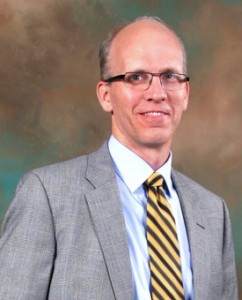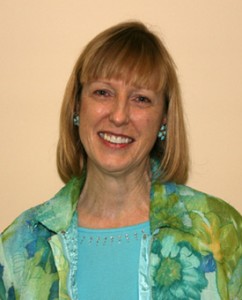Big Business and Big Science Partner in Computing to Speed Products to Market
Jack Wells speaks at GE Technology Summit about government–industry collaborations
Jack Wells, director of science for the National Center for Computational Sciences, participated in the General Electric (GE) Technology Summit to explore partnering opportunities between the company and America’s national laboratories. Hosted by GE Global Research with Battelle Memorial Institute and held at the GE Global Research Center in Niskayuna, N.Y., on Oct. 5 and 6, the summit featured lab tours; a keynote speech by Karina Edmonds, technology transfer coordinator for the US Department of Energy(DOE); and panel discussions about research central to GE’s business success, such as solar and wind technologies, the smart grid, advanced materials, and high-performance computing (HPC). The event was a good case study of how companies can gain access to government resources and in doing so enhance their global competitiveness.
Wells spoke on a panel about collaborative opportunities in HPC at his Oak Ridge National Laboratory (ORNL) facility. He highlighted three pathways by which industrial users can gain access to Oak Ridge Leadership Computing Facility supercomputers. Approximately 60 percent of time available on Jaguar, America’s fastest supercomputer, is allocated through Innovative and Novel Computational Impact on Theory and Experiment (INCITE), a program co-managed for DOE by the Argonne and Oak Ridge Leadership Computing Facilities, whereas 30 percent is allocated through the Office of Advanced Scientific Computing Research Leadership Computing Challenge (ALCC) and 10 percent through Director’s Discretion. “If there’s a national need, certainly there are mechanisms for utilizing this machine,” Wells said.
The programs allocate time through competitive peer-review processes that focus on the potential for scientific and technical impact of the proposed work, as well as need for these leadership-class systems, which are defined as capable of running a large fraction (20 percent, in the case of INCITE) of the machine’s processors in a single, production simulation. Wells emphasized that the definition of leadership-class computing is evolving beyond a calculation using a significant proportion of a supercomputer’s processors. “People are making arguments that you’re going to have a leadership requirement based on time to solution or a requirement based on the total memory, because we have such a large amount of memory on the computer,” he said. “A leadership computing metric based on using a certain number of processing cores is relevant but imperfect. If it’s impactful, we want users to bring [their computational problems] forward. ALCC and the Director’s Discretion options in particular provide terrific opportunities for companies to gain access to Jaguar even if their projects do not hit INCITE’s 20 percent metric.”
Suzy Tichenor, director of ORNL’s Industrial HPC Partnerships Program, established in 2009 to foster collaboration and innovation between government and industry, agreed. “We want to help companies solve strategic, competitively important computational problems that cannot be solved on their internal HPC systems.” Between 2010 and 2011, 11 companies received access to Jaguar: Ramgen, Smart Truck Systems, Caitin, GE Global Research, GM, Ford, Procter & Gamble, Boeing, United Technologies Research Center, Pratt & Whitney, and Northrop Grumman.
Depending on the nature of the problem the company is trying to solve, the number of hours needed to compute the solution, and the scalability of the software that will be used, ORNL’s program helps companies navigate the different pathways for applying for time on Jaguar. “We review the project goals with the company. Then we guide them to the most appropriate option,” Tichenor said.
Leveraged partnerships
Overseeing the summit were GE Global Research’s Gary Leonard, technology director, and Mark Little, senior vice president and director. Attendees included GE researchers and executives as well as representatives of Battelle and the national labs, such as User Services and Outreach Manger David Martin of the Argonne Leadership Computing Facility and Corporate Fellow Amit Goyal of ORNL’s Materials Science and Technology Division. DOE representatives from both Office of Science and National Nuclear Security Administration labs spoke about advanced research conducted by their organizations.
Speakers from ORNL included Johney Green, who presented a case study about an ORNL–GE collaboration to finalize, test, and market the first product from a major brand to meet DOE’s new Energy Star criteria for electric heat pump water heaters. Tom King, director of ORNL’s Energy Efficiency and Electricity Technology Program, spoke during a panel discussion of the smart grid.
Recent GE participants in ORNL’s Industrial HPC Partnership Program include Branden Moore, who through an ALCC allocation received 20 million processor hours to predict unsteady performance of low-pressure turbines, and Masako Yamada, who received 40 million processor hours through ALCC to design surfaces on which ice cannot easily form. Through INCITE, GE’s Anurag Gupta was awarded 19 million hours at the Argonne Leadership Computing Facility to characterize phenomena that affect clean, efficient energy and propulsion systems.
Wells’s panel was moderated by Richard Arthur, manager of the computing and cyber security lab for GE Global Research, who posed questions about opportunities for the public and private sectors to work together to advance modeling and simulation. Panelist Charles Nietubicz, research leader for HPC at Battelle Memorial Institute, who had a long career in defense research laboratories, emphasized building partnerships around important HPC problems. Robert Neely, a computer scientist for Lawrence Livermore National Laboratory who focused on the role of modeling and simulation in securing America’s nuclear stockpile, shared plans for his lab’s Livermore Valley Open Campus, in which HPC partnerships play an important role. Jim Ang, technical manager for Sandia National Laboratories, talked about the need for computer architects to work with applications scientists and engineers to co-design hybrid multicore machines that deliver research results as supercomputers approach exascale—approximately a thousand times faster than today’s petascale machines.
“This [event] was important for both GE and the national labs because particularly in times of severe budget constraints, everyone needs to be able to get the most out of reduced resources,” said Suzy Tichenor. “Partnerships are a terrific way to leverage your resources and get a greater return on them by collaborating with others who have complementary skill sets, similar motivations, and complementary research goals.”
The panel afforded the opportunity for a dialogue about stumbling blocks that sometimes prevent partnerships from running as smoothly as they could. Discussion topics ranged from cultural differences between businesses and government agencies to the need for setting clear goals that benefit all partners. Industrial participants perceived an academic bias on the peer-review panels and lamented government restrictions against using Jaguar for proprietary work. They especially feared the INCITE requirement that a calculation use 20 percent of Jaguar’s processors, because many of their software application codes do not scale up. The 20 percent metric will be even harder to meet when Jaguar is upgraded to become a bigger system of 10–20 petaflops by 2013.
“Not all INCITE projects can meet that metric at the beginning of the allocation or at the time of the award,” Wells said. “We have INCITE projects that have a plan to scale up and still get awards even if they don’t have evidence of scaling up in their code. If there’s a plan and a commitment to work on scaling, that’s one of the things we do through our scientific computing group to help an INCITE award winner.” One role of government is supporting high-risk, high-rewards research. “The instruction to the peer-review committee is if the project has high impact, we can work on the computational readiness,” Wells said. “Be willing to bring your problem.”


 How to resolve AdBlock issue?
How to resolve AdBlock issue?